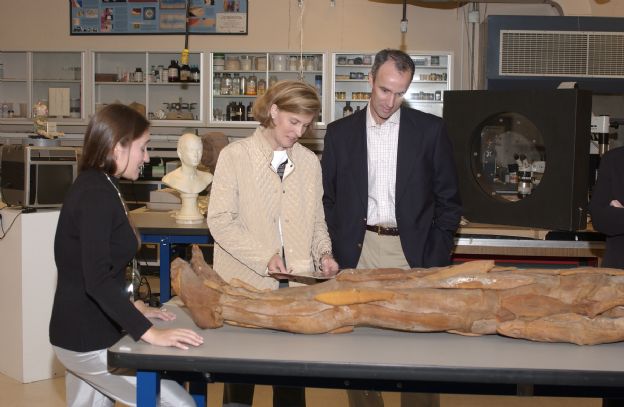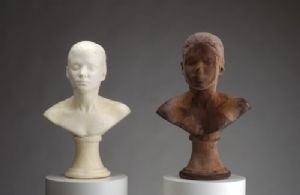Conservation

Conservation at the Hirshhorn

Janine Antoni, "Lick and Lather", 1993-1994, from the Hirshhorn's collection.
The preservation and restoration of the works of art in the collection are the responsibility of the five conservators, who, along with photography and registrar, make up the fourteen-member staff of the collections management department.
Dr. Susan Lake is the head of collection management as well as chief conservator. The staff focuses their work on paintings and mixed media objects, works on paper and new media, outdoor sculpture, and matting and framing. The conservation staff must continuously strike a balance between the specialization needed to attend to materials and techniques and the versatility and creativity required to tackle the unexpected.
Tradition
Conservation began at the Hirshhorn shortly after its founding in 1974. At that time, the works of art reflected both the tastes of its founder, Joseph Hirshhorn, as well as the art being made at the time. From a conservation standpoint, areas of expertise fell into the remarkably conventional ones of paintings, sculpture, and works on paper. Collage and assemblage, which often consisted of elements of all three, usually fell to the conservator whose area of expertise reflected the dominant medium. Outdoor sculpture, a major emphasis from the beginning, largely consisted of bronze, painted or coated steel, and stone works. Photography was not extensively collected.
Contemporary Art
When James Demetrion became director in 1982, the Hirshhorn began to emphasize contemporary art, and the conservation department was strongly influenced by that change. The last quarter of the twentieth and the first years of this century have seen a progression towards materially complex three-dimensional work, often large in scale and conceptual in nature. In some cases, the works have such a short “life expectancy,” a transience that is often intentional, that preservation itself has had to be redefined, or it risks being relegated to an ironic anachronism.Another change has been an explosion in the production of photography, film, and video. The processes used in the creation of such works are quickly evolving, and, with changes in technology, their stewardship requires a long-term process of migration, reformatting, emulation and other processes unique to media art. Conservation of such works necessitates a background in technologies worlds apart from the studio art skills of the traditionally trained art conservator.
To meet these and other needs, the conservation department will be adding a post-graduate conservation fellow in “time-based” artwork. Yet, it is likely that artists will continue to use “traditional” materials, so the goal for the future is to continually expand awareness and technical abilities. As this process continues to unfold, the conservation staff will be challenged to respond to the often-tenuous physicality of the newest art, even as it is being made.

